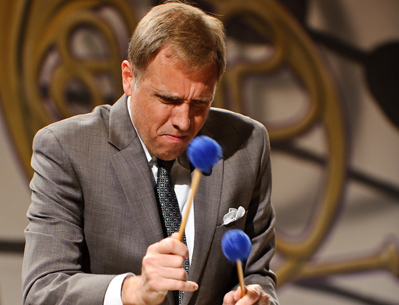Dec 9, 2025 12:28 PM
In Memoriam: Gordon Goodwin, 1954–2025
Gordon Goodwin, an award-winning saxophonist, pianist, bandleader, composer and arranger, died Dec. 8 in Los Angeles.…

Vocalist Lauren Henderson (clockwise from top-left), broadcaster and journalist Mark Ruffin, manager Gail Boyd, venue-owner Gerry Eastman and bassist John Clayton recount some of their experiences in the jazzworld.
(Photo: Courtesy Of Artists)Mark Ruffin: program director for Sirius XM’s Real Jazz channel, journalist
I’ve had a great career. My 40th anniversary [in jazz radio] is coming up, in fact. So, I can’t complain, because I’ve done 40 years in jazz. Do I think I would be further without racism? You’re damn skippy.
I can give you examples. The most clear example is the fact—when smooth jazz happened, I was in at the beginning of that. I worked at a smooth-jazz station from 1988 to 1996, and I spent half of my time trying to get out of there. When smooth jazz happened, suddenly corporations were interested. Corporations came in and started hiring white guys from progressive-rock stations who didn’t know anything about jazz. And those guys—most of them, 95, 96, 97 percent of them—were afraid of any Black man who had any knowledge about jazz. And that’s why in smooth jazz, white women and white men and Black women proliferated. There were only two guys in smooth jazz at the beginning for many years, and that had to do with insecurities.
At the station I worked at, WNUA in Chicago, I was passed over [for music director] by a couple people who had a tenth of the knowledge of the music and radio procedure that I did. But I had to buck up, I had to keep going. I realized I was at a very prestigious place and my situation was different than a lot of folks in that I had two careers going in jazz simultaneously—as a writer, journalist and editor.
I was part of a Village Voice article on why there weren’t any Black music editors at daily papers. What’s funny, coming up, I realized these [white jazz] writers and editors, some of whom I admire, they had to learn what they were talking about. ... I studied it while I was living it, whereas most of them study it afterwards. Now, it don’t matter, there are no jazz journalists at newspapers, Black, white, pink or yellow. But I used to have problems with that. Reading reviews where I was at the show, and I’m like, “What is this guy talking about?” DB

Goodwin was one of the most acclaimed, successful and influential jazz musicians of his generation.
Dec 9, 2025 12:28 PM
Gordon Goodwin, an award-winning saxophonist, pianist, bandleader, composer and arranger, died Dec. 8 in Los Angeles.…

Belá Fleck during an interview with Fredrika Whitfield on CNN.
Jan 13, 2026 2:09 PM
The fallout from the renaming of the John F. Kennedy Center for the Performing Arts to include President Donald…

Flea has returned to his first instrument — the trumpet — and assembled a dream band of jazz musicians to record a new album.
Dec 2, 2025 2:01 AM
After a nearly five-decade career as one of his generation’s defining rock bassists, Flea has returned to his first…

Dec 11, 2025 11:00 AM
DownBeat presents a complete list of the 4-, 4½- and 5-star albums from 2025 in one convenient package. It’s a great…

Vibraphonist Chuck Redd found himself in the midst of a political firestorm after canceling his gig Dec. 24 at the newly renamed Trump Kennedy Center.
Jan 6, 2026 2:32 AM
The Board of Trustees at Washington, D.C.’s Kennedy Center for the Performing Arts voted on Dec. 18 to rename the…